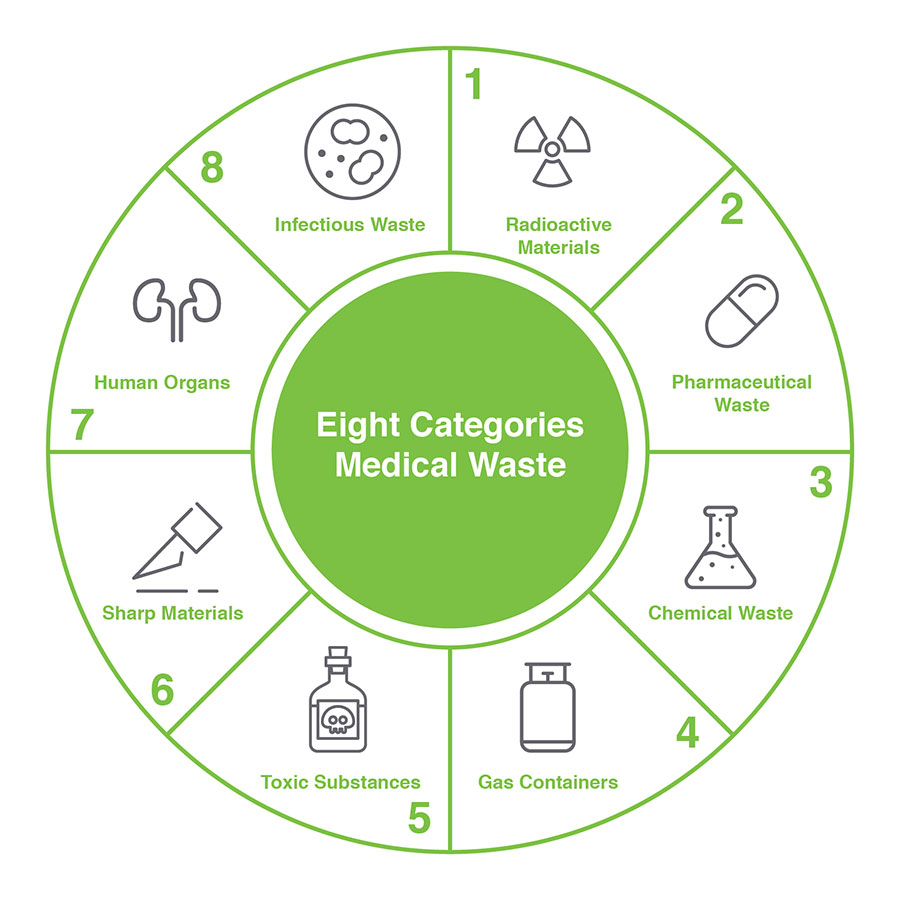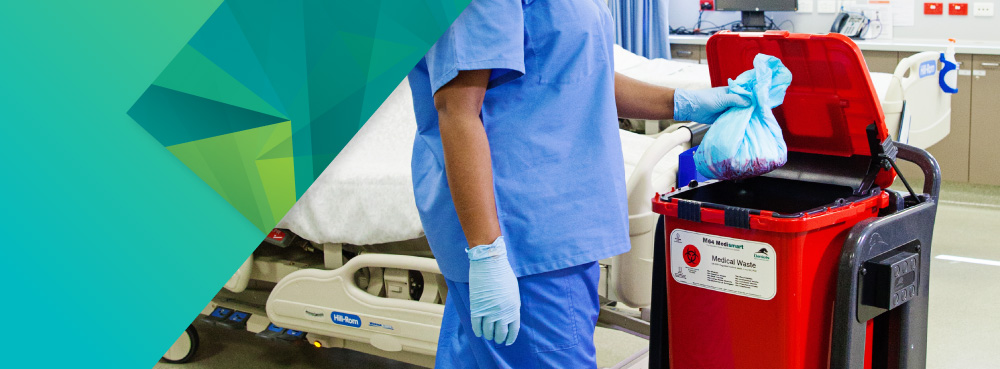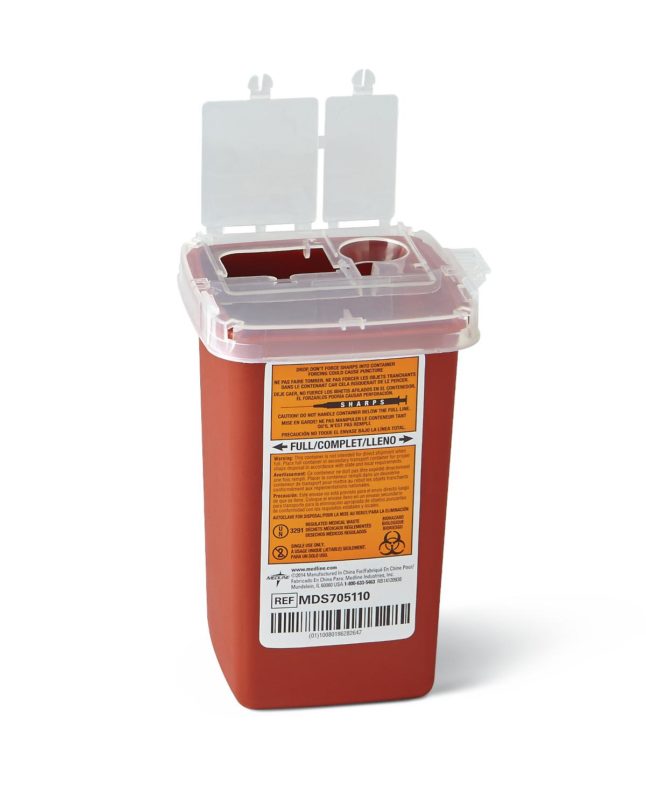Medical Waste Removal Excellence: Elevating Safety Criteria in Your Center
Medical Waste Removal Excellence: Elevating Safety Criteria in Your Center
Blog Article
Keep Ahead of Rules: Specialist Recommendations on Medical Waste Disposal
In a world where the medical care industry is frequently developing, it is imperative for medical facilities to stay ahead of policies when it comes to the correct disposal of medical waste. From comprehending the different categories of medical waste to executing the best collection and segregation techniques, this discussion will certainly offer workable ideas and valuable insights to assist facilities remain in advance of policies in the ever-changing landscape of clinical waste disposal.
Recognizing Clinical Waste Categories
Recognizing medical waste categories is essential for proper disposal and monitoring in healthcare centers. Clinical waste describes any kind of waste generated by medical care activities that may pose a risk to public wellness or the setting. It is critical to categorize clinical waste accurately to guarantee its risk-free handling, transport, disposal, and therapy.
There are a number of groups of medical waste that health care centers require to be knowledgeable about. The most common classifications include transmittable waste, pathological waste, sharps waste, pharmaceutical waste, and chemical waste. Each category has specific standards and policies for its appropriate management and disposal.
Transmittable waste includes materials contaminated with blood or other physical liquids, such as gloves, gowns, and research laboratory societies. Pathological waste refers to human cells, organs, or body parts that need unique handling and disposal. Sharps waste includes used needles, syringes, and other sharp things that can trigger injury and transfer infections. Drug waste comprises expired, unused, or contaminated medicines that need careful handling and disposal. Finally, chemical waste consists of solvents, anti-bacterials, and various other chemical materials used in health care centers.
Remaining Up-To-Date With Regulatory Adjustments
Staying present with governing modifications is vital for healthcare facilities to make certain compliance and proper management of clinical waste disposal. medical waste removal services. With laws frequently developing, it is important for medical care facilities to stay current to prevent penalties, penalties, and possible damage to the setting and public wellness
To stay in advance of regulatory adjustments, health care centers must establish a system for tracking and tracking updates. This can be done by subscribing to regulatory e-newsletters, participating in meetings and workshops, and actively getting involved in market organizations. Additionally, facilities need to assign an employee or group in charge of remaining educated and disseminating details to appropriate stakeholders.
Normal interaction with regulative firms is additionally crucial. Healthcare facilities should establish partnerships with neighborhood, state, and government firms to guarantee they recognize any kind of adjustments in policies that may impact their waste monitoring techniques. This can be done through regular meetings, involvement in public remark durations, and proactive involvement with governing companies.
Moreover, health care centers ought to consider partnering with waste administration firms that focus on medical garbage disposal (medical waste disposal services with WasteX). These business are often well-versed in the most recent guidelines and can give guidance and support to make sure conformity
Applying Correct Collection and Partition Methods
To efficiently handle medical garbage disposal, health care centers have to develop correct collection and partition approaches according to governing standards. Applying these approaches makes certain the secure handling and disposal of possibly unsafe products, secures the atmosphere, and reduces the danger of infections and injuries to healthcare workers and the public.
Proper collection and partition approaches entail making use of assigned containers and labeling systems. Healthcare centers need to give plainly identified containers for various kinds of clinical waste, such as sharps, contagious waste, pharmaceutical waste, and non-hazardous waste. These containers ought to be color-coded and clearly significant to stay clear of complication and advertise simple identification.
Furthermore, healthcare facilities must train their staff on the proper procedures for collecting and setting apart medical waste. This consists of enlightening them on the different kinds of waste, the proper containers to utilize, and the significance of following policies and standards. Routine training sessions and refresher courses need to be carried out to guarantee that staff participants remain current on finest practices.
Additionally, medical care facilities need to establish a system for normal collection and disposal of medical waste. This might involve partnering with qualified waste administration companies that focus on medical garbage disposal. These companies will certainly guarantee that the accumulated waste is delivered and gotten rid of in conformity with regulative needs.
Selecting the Right Disposal Approaches

Incineration is among the most find here reliable and typical approaches for taking care of particular kinds of medical waste, such as pathological waste and sharps. It includes the controlled burning of waste at heats, decreasing it to ash. Nevertheless, incineration can launch unsafe toxins into the air and add to air pollution.

Chemical therapy entails the use of chemicals to counteract the waste and disinfect. Microwave treatment uses microwave energy to heat and sanitize the waste.
Making Certain Conformity Via Documentation and Training
After carefully considering the suitable disposal techniques for medical waste, health care centers have to ensure conformity with regulations and minimize environmental impact by carrying out efficient paperwork and training procedures. This step is vital in keeping a lasting and risk-free atmosphere for both health care employees and the public.

Medical care employees that take care of clinical waste should receive suitable training on waste partition, taking care of, and disposal treatments. By providing extensive training, health care centers can empower their staff to make educated choices and reduce the threat of improper waste disposal.
Final Thought
To conclude, staying ahead of regulations in medical garbage disposal is essential for healthcare facilities. medical waste removal service. Comprehending the various groups of clinical waste, staying upgraded with governing modifications, executing proper collection and partition techniques, selecting the appropriate disposal approaches, and making certain conformity through documentation and training are all crucial actions. By following these standards, health care organizations can properly get rid of and take care of of clinical waste in a liable and risk-free manner
From understanding the various classifications of clinical waste to carrying out the ideal collection and segregation methods, this conversation will certainly give beneficial understandings and workable tips to aid facilities remain ahead of guidelines in the ever-changing landscape of medical waste disposal. - medical waste disposal services with WasteX
The most usual categories include infectious waste, pathological waste, sharps waste, pharmaceutical waste, and chemical next waste. Health care centers should offer clearly identified containers for different types of medical waste, such as sharps, contagious waste, pharmaceutical waste, and non-hazardous waste. Medical care facilities should establish an extensive system to tape-record and track all elements of medical waste disposal, including types of waste produced, quantities, and disposal techniques utilized. Health care employees who manage medical waste must get suitable training on waste segregation, managing, and disposal treatments.
Report this page